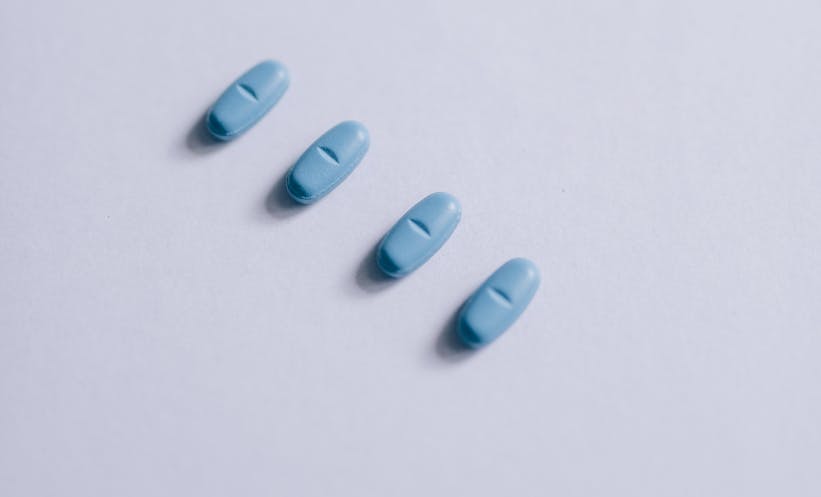Welcome to European Medical Journal’s review of MEDICA 2016, the largest and most impactful medical trade fair globally, where decision makers and key stakeholders from across the global health industry met. This year’s fair smashed records beyond predicted scope, with >5,000 exhibitors from 70 nations presenting.
Running alongside MEDICA 2016 was a diverse programme featuring the MEDICA Education Conference, a cutting-edge interdisciplinary training course which considers the link between medical technology and science, facilitating discussion and the mutual sharing of ideas between doctors and medical device designers. Conference president Prof Stefan Frantz, Director of the Policlinic for Internal Medicine III, Universitätsklinikum Halle, Halle, Germany, announced: “I am pleased that, for the third time in a row, we can offer national and international visitors to the conference a programme that is unique in its interdisciplinary and internationality.” Prof Frantz went on to express that: “We will be delighted if many colleagues use this opportunity to broaden their horizons.” The programme was scheduled in such a way as to allow participants to visit the MEDICA trade fair afterwards and view a huge range of medical innovations, perfectly complementing the conference.
There was an excellent programme, with each day of the conference constructed around a chosen theme. Monday saw ‘New Operative Techniques in Surgery’ placed in the spotlight, covering the current standards of surgical methods, future possibilities, and innovations; Tuesday covered ‘Imaging and Interventional Procedures’ and Wednesday examined ‘Future Technologies and Remote Patient Management’, considering questions such as the impact of telemedicine on chronic diseases such as diabetes. Finally, Thursday highlighted ‘Diagnostics in Internal Medicine, Laboratory Medicine, Toxicology and Hygiene’. In addition to symposia detailing technical innovations, medical training courses were provided to allow participants to equip themselves with the skills and know-how to utilise these innovations. Prof Frantz enthused: “In these courses, participants have the opportunity to become familiar with new medical technologies and to refresh their expertise in a practical and interactive manner.”
As well as the MEDICA Education Conference, there were other complementary conferences targeting specific groups. For example, sports medical experts were catered for by the MEDICA Medicine and Sports Conference, which tackled the use of wearables for collecting data on vital signs and injury prevention. Additionally, this conference considered how physical and mental performance could be increased. Another tightly focussed event was the DiMiMed, which encompassed military and disaster medicine and saw military physicians unpack the latest medical technology findings related to war and crisis regions.
Exhibitors at MEDICA showcased the latest trends and innovative developments, dovetailing perfectly with the accompanying programme. The products that were featured ranged from laboratory, physiotherapy, medical, and orthopaedic technology, to electrotherapy, health IT, and commodities and consumables. For instance, the Wearable Technologies Show hosted numerous devices, including a bracelet functioning as an early warning system for epileptics, a waistband clip that halts menstrual cramps, and a patch that allows the monitoring of asthma.
For the last 5 years, MEDICA has hosted the hotly contended MEDICA App COMPETITION, where teams go head-to-head to create the ‘Best Medical Mobile Solution’. This year’s competition was as tightly contested as ever, with the top honours and a €2,000 cash prize won by a development team from Israel, with ‘Up Right’, which combined an app and a wearable in order to optimise posture and stimulate movement. Utilising an accelerometer and a variety of sensors, the wearable device vibrates on the user’s back when they sit in a slouched position, encouraging them to develop improved posture. This app can already be purchased online and clinical trials are currently in progress.
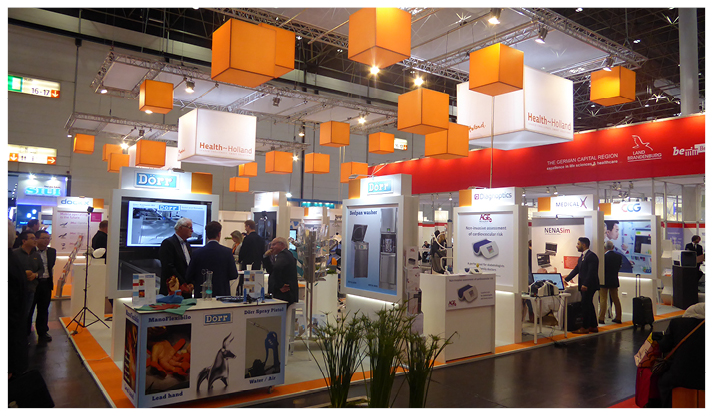
Digitisation and Miniaturisation Key for New Technology
DIGITISATION of the healthcare sector has led to the development of a plethora of medical technology in recent years. In a MEDICA press release, Joachim Schäfer, Managing Director of the Messe Düsseldorf, the venue for this year’s event, discussed the trend of smaller and lower-cost medical devices which are taking the market by storm.
Software innovation was a key player at this year’s event; user interfaces and navigation are proving particularly important for new devices which must, increasingly, meet the specific needs of individual users. One development patrons seemed most interested in was a standardised operating method and control concepts for multiple devices, which allows greater accessibility for users who no longer need to learn a complex set of operating instructions for each new device. Innovations in this area could lead to greater efficiency in hospitals and laboratories as the machines become easier to use. Schäfer gave the example of analysing microscopy samples. He stated that automatic analysers, currently, are too specialised or, if this challenge is addressed with broad-spectrum analysers, too expensive. Using the results of recent trials, which demonstrated that diseased tissue emits and responds to light in different ways to healthy tissue, low-cost automatic scanning methods might be possible for a whole range of tests. Similarly, point-of-care devices for bedside use in hospitals could replace laboratories for simple blood tests, reducing both cost and time.
The miniaturisation and digitisation of medical technology could also benefit the world of minimally invasive surgery, for example in the case of microendoscopes. One such device, designed for examining the brain in patients with Alzheimer’s disease, Parkinson’s disease, or cancer, was presented at the COMPAMED congress; it is magnetic resonance imaging (MRI)-compatible, composed of part-plastic, part-ceramic materials, and also features ultrasound capabilities rendering it capable of destroying tumour cells. It is hoped that these new, ever-smaller devices will have a large impact on the healthcare industry.
Digital Initiatives to Improve Patient Care Discussed at the MEDICA HEALTH IT FORUM
DIGITISATION in the medical sector to improve patient care and efficiency was a major topic of discussion at MEDICA 2016. In Germany and elsewhere, there have recently been a number of such initiatives, and these were discussed during the MEDICA HEALTH IT FORUM according to a MEDICA press release.
One such innovation is the advent of ‘x-Health’, which is the necessary interoperable ‘XChange’ of location-independent digital services, a market that is growing internationally. In Denmark for example, patients can access their electronic health files, and the applications have since developed to allow people to add their own data. It is essential, however, that patients remain in complete control of their own records in such a system.
Another phenomenon that is attracting substantial interest in Germany is that of ‘telemedicine’. This has been inspired by the shortage of doctors in rural communities, making the provision of good care difficult. Potentially, certain healthcare services could be provided via telemedicine, negating the need for patients to visit doctors. However, questions such as the extent to which these new technologies will reduce personal contact with physicians, and how secure the transfer of such data would be, still need to be answered.
Linked to the concept of telemedicine is the development of ‘TeleVERAH’, a project which was presented at the FORUM. In this system, a medical professional would attend to patients, instead of the general practitioner, to carry out various tests such as weighing. The data would then be transferred back to the practice. This would mean that travelling times would be eliminated for doctors, while maintaining good quality of care and interaction with patients.
According to Prof Britta Böckmann, Information Sciences and Medical Information Sciences, Dortmund University of Applied Sciences and Arts, Dortmund, Germany, such digitalisation of healthcare services cannot come quickly enough for patients: “Legally and theoretically, patients are in sole control of their details, but in reality they are unable to view them or pass them on.” She added: “Patients are entitled to digitisation.”
Treatment and Wearable Devices Displayed at MEDICA
A NUMBER of wearable devices were showcased at this year’s MEDICA which took place on the 14th–17th November 2016 in Düsseldorf, Germany. Digital healthcare is considered an important aspect for both the treatment and prevention of certain diseases. Devices such as the ‘Freestyle Libre’, ‘Smart Patches’, ‘Firstbeat Bodyguard’, ‘QardioArm’, and ‘QardioCore’ were all discussed at this year’s MEDICA Healthcare Forum according to a MEDICA press release.
Several digital devices to assist in the management of diabetes are already available on the market. The Freestyle Libre smart patch for example, assists in enabling the correct insulin dosage to be administered to the patient by determining blood sugar levels without the need for taking blood. Another smart patch solution involves the use of an Android™ smartphone to scan a sensor-incorporated arm patch in order to measure current glucose levels as well as additional values such as the patient’s history over the last 8 hours. This device is considered particularly useful for paediatric diabetics as the scanner allows the parent or carer to assess glucose levels without having to wake the child should a dose of insulin not be necessary.
Devices to assist patients with the lifestyle management of diseases such as Type 2 diabetes mellitus are also being developed. The Firstbeat Bodyguard, usually worn for 72 hours, provides valuable information to physicians about fluctuating heart-rate, stress levels, and sleep quality, for example. Additionally, the QardioArm and QardioCore, which have been already approved by the US Food and Drug Administration (FDA), allow individuals to monitor blood pressure without Velcro straps or pumps, and body temperature, heart frequencies, and breathing without the need for cables and plasters, respectively.
Wearable devices are useful in helping patients manage their own treatment without the need of constant assistance from healthcare professionals. Companies are already investing in such schemes to allow patients to voluntarily obtain digital device incorporation within their healthcare plans.
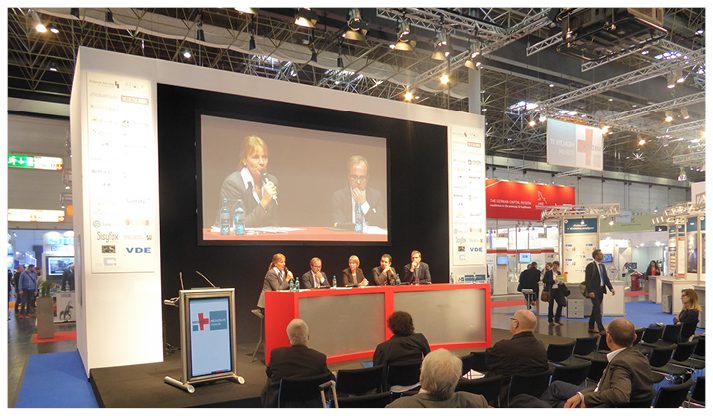
Future Developments in Sports Technologies
DIGITAL innovations are fast becoming a key component within the field of sports medicine. The MEDICA MEDICINE + SPORTS CONFERENCE 2016, Düsseldorf, Germany, provided the ideal opportunity for multidisciplinary exchange between sports physicians, researchers, and professional athletes, as reported in a MEDICA press release.
The subject of ‘Body Enhancement’ was discussed on the opening day. While revolutionary progress has seen some athletes with prostheses required to prove they are not gaining an unfair advantage, further development of prostheses well-adapted for everyday life is required. Prof Robert Riener, Head of the Department of Health Sciences and Technology, ETH Zürich, Zürich, Switzerland, presented the world premiere of ‘Cybathlons’. Individuals with disabilities partook in challenges designed to test the benefit of robot-assisted technologies to overcome everyday obstacles such as walking up the stairs.
Dr Christian Schneider, Head Physician for Sports Orthopaedics at the Schön Klinik München Harlaching, München, Germany, presented on the future of physicians, predicting that the automation of treatment aspects such as physiotherapy exercise accuracy, and regime adjustment could be just around the corner, meaning a stop to weekly hospital visits.
On its second day, MEDICA played host to a focussed conference on sports innovation ready for immediate implementation Prof Jürgen Scharhag, Team Physician for the under-21 German national team; Institute for Sports and Preventive Medicine, Saarland University, Saarbrücken, Germany, explained how those who participate in competitive sports are expected to live longer and that physicians are now able to utilise electrocardiography to discern between unwanted pathological effects and the physiological benefits of training. Development of wearable technologies to collect and collate physiological and biomechanical data is underway, such as the ‘miLife’ project, presented by Prof Björn Eskofier, Pattern Recognition Lab, Friedrich-Alexander-Universität Erlangen-Nürnberg, Erlangen, Germany.
“Physicians will not become redundant in future, they will rather continue to play a key role in the decisions about relevant diagnostics, the commencement of treatments, and in prevention,” assured Dr Schneider. He is confident that innovation relays progress and that physician intervention will continue to run parallel to technological advance.
Computer-Generated Personalised Orthopaedic and Sports Insoles
COMPUTER-GENERATED orthopaedic and sports insoles are an innovation offered by one of the companies displaying their wares at MEDICA 2016, held in Düsseldorf, Germany according to a MEDICA press release.
The Orthema Group, Rotkreuz, Switzerland, have utilised a cutting-edge device with >500 sensors to capture a three-dimensional measurement analysis of an individual’s foot. The device works with the help of an orthotic expert who uses the software to interpret these data and carry out a detailed analysis of the individual’s weight-bearing and non-weight bearing gait, developing a personalised and unique solution. The orthotic expert determines the appropriate material to use, then connects a computer numerical controlled milling machine to the system producing an exact replica of the foot profile. These insoles have a variety of uses, with Marcel Herzog, the founder of Orthema, explaining: “I wanted to eliminate muscular pain by correcting gaits, but I was also looking for ways to optimise power transfer for elite athletes.” While this device was originally intended to produce insoles for top athletes and the military to assist with injury recovery and power transfer, it quickly garnered attention from the orthopaedic industry who spotted its potential for treatment of issues such as overpronation, joint problems, plantar fasciitis, splayed feet, and other ailments. Currently, the German football team utilise this service for individualised insoles.
This method aims to be faster and more efficient than conventional methods of insole manufacturing, enabling increased production. It should be noted that it is crucial to have an operator trained in using the machine, otherwise a thorough analysis cannot be carried out. Hopefully in time, devices and methods such as this will be used on a larger scale to provide effective solutions to individual problems and reduce pain.
Demand for Emphasis on Healthy Lifestyle in Prevention Schemes
OBESITY needs to be recognised by global healthcare systems as a disease in its own right; this notion was emphasised in the run-up to this year’s MEDICA Education Conference 2016, held in Düsseldorf, Germany, according to a MEDICA press release.
At present, data from the National Consumption Study reflects a startling reality: nearly 70% of men and >50% of women in Germany are classed as overweight, with a BMI of ≥25 kg/m². According to figures extrapolated by the World Health Organization (WHO), this could mean that >50% of German citizens will be categorised as clinically obese by 2040. Parallel to the rise in obesity, healthcare providers are also observing a marked increase in sufferers of related diseases, including but not limited to, metabolic, cardiovascular, and cancerous conditions. The rise in the associated complications is placing an increased burden, particularly economically, on an already overwhelmed healthcare system and therefore a lack of exercise or poor dietary choices can no longer be attributed primarily to effects on the individual.
“According to our current findings, physical activity and sport is as important as a cancer drug,” explained Prof Christian Löser, Head and Chief Physician of the Medical Clinic, the Red Cross Hospital, Kassel, Germany. “We know today that a healthy lifestyle, including a balanced diet and regular exercise, can prevent diseases.”
Type 2 diabetes mellitus and metabolic syndrome comorbidities (e.g. coronary heart disease, stroke) are the most prevalent diseases suffered by individuals as a result of poor lifestyle regimens. Seemingly unbeknownst to many people, obesity and its BMI classification of ≥30 kg/m² has also been shown across large observational studies to correlate with specific cancers, particularly that of the colon. “Colon cancer is a typical prosperity disease,” emphasised Prof Löser. “A healthy lifestyle can achieve a great deal in terms of prevention.”
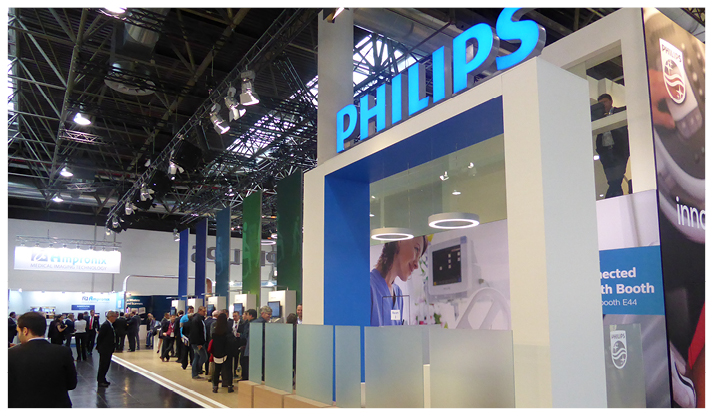
Telemedicine Early Warning System for Heart Failure Patients
EARLY warning of a deterioration in the condition of heart failure patients might now be possible thanks to the development of a telemedical system in Germany. The device, which monitors blood pressure, pulse, and body weight amongst other factors, could help doctors to treat a patient before complications occur.
In a MEDICA press release dated 6th November 2016, Prof Friedrich Köhler, Centre for Cardiovascular Telemedicine, Charité Medical University Berlin, Berlin, Germany, discussed how a fall in blood pressure, pulse acceleration, or water retention that is not immediately apparent to the patient, can signal an approaching deterioration in their condition: “If a diagnosis is made in the early stages, we are often able to take countermeasures to prevent deterioration or even premature death.” He went on to discuss a trial currently underway in Germany named the Fontane study, testing a transmission device to assess its efficacy as an early warning system for these symptoms. Half of the 1,500 chronic heart failure patients that have enrolled on the study have been provided with the device, which will transmit data on a daily basis to monitor the patients’ condition. Prof Köhler explained: “The aim is to reduce the number of days lost by hospital stays or premature death.” Initial results from this trial are expected in 2018.
Telemedicine has been the subject of several trials in recent years with varying results regarding its efficacy. Both the CHAMPION and IN-TIME study showed favourable data regarding the improvement of quality of life for patients using a pressure gauge in the pulmonary artery and an implanted defibrillator, respectively. Contrastingly, MORE-Care and REM-HF suggested that data recordings from pacemakers and implanted defibrillators did not improve quality of life for patients.
Prof Köhler warned that telemedicine should only be used in conjunction with in-person appointments: “Treatment of a patient with chronic heart failure must be carried out personally by a specialist based on adequate information and in accordance with the medical confidentiality.”
Fresh Perceptions into Cardiac Magnetic Resonance Imaging
MAGNETIC RESONANCE IMAGING (MRI) has long been used for diagnosis within different areas of the body including the head, abdomen, and locomotor system. Prof Michael Markl, Departments of Radiology and Biomedical Engineering, Northwestern University Feinberg School of Medicine, Chicago, Illinois, USA, presented fresh insights into cardiac MRI scans at this year’s MEDICA Education Conference which took place from 14th–17th November 2016 in Düsseldorf, Germany.
Prof Markl explained in a MEDICA press release dated 15th November 2016: “Within a few years, the cardiac MRI has developed into an examination tool that can be used for diseases of the heart and blood vessels.” In regard to the importance of the ability of being able to use cardiac MRI to assess blood flow he continued: “The dynamic propagation of the flow wave can be tracked in a quantitatively precise manner by monitoring the dynamic change of the flow profiles over the heart cycle.”
Prof Markl provided further information, explaining the importance of cardiac MRI in assessing the structure and function of the heart after injecting a contrasting agent into the vein, thus allowing doctors to assess which areas of the heart are and are not being supplied with blood: “After a heart attack, the cardiac MRI shows which parts of the heart muscles have died.” Alongside this, a stress MRI can be carried out which examines “how the heart muscle responds to load,” both of which are beneficial to monitor heart activity allowing doctors to assess patients’ safety and enable them to react quickly should there be a problem.
Currently little is known about the interaction between heart activity and the elastic blood vessels and therefore the cardiac MRI can also be considered an important research tool. For instance, the heart requires a power of 1 W to pump almost 5 L of blood per minute through a tubular system with capillaries that are 0.01 mm thick. As Prof Markl noted: “This is much more efficient than any tubular system developed by humans.”
Innovative Angiography System Benefits Both Patients and Surgeons
INNOVATIONS for surgical procedures proved to be some of the most eagerly anticipated developments at this year’s MEDICA. Improvements to imaging methods and three-dimensional (3D) scanning are expected to improve the accuracy of diagnoses, efficacy of interventional surgery, and even reduce discomfort for patients. One such design was discussed in a MEDICA press release dated November 2016.
One of the new models presented during the congress was the Siemens Healthineers robot-supported ARTIS pheno angiography system. The new device boasts a plethora of features designed to address a range of challenges faced in minimally invasive surgery for multimorbid patients. Minimally invasive surgery can be challenging in patients who suffer from simultaneous health conditions, and in some cases, it may not even be possible to offer this type of intervention. This is especially pertinent in older patients, who can be at greater risk of complication during surgery due to chronic disease. By utilising a device that addresses challenges such as shorter scan times by using smaller amounts of contrast agent, surgeons can drastically improve the standard of care offered to patients. For instance, shorter scan times facilitate a reduction in the amount of iodinated contrast agent during 3D angiography in the thorax and abdomen by ≤15%. From a surgeon’s point of view, devices such as this one could also improve patient care by removing the difficulties associated with extended surgery times. Being able to tilt the table to any angle means that imaging becomes easier and access to the operating area is not so limited.
Hygiene in hospitals is another factor that needs to be addressed in the innovative new products being marketed. The ARTIS pheno for example, has been designed to allow constant hygiene via an antimicrobial coating to stop bacteria and viruses from reproducing. With such a huge range of innovative features, it is certainly exciting to ponder what might come next to revolutionise the healthcare industry.
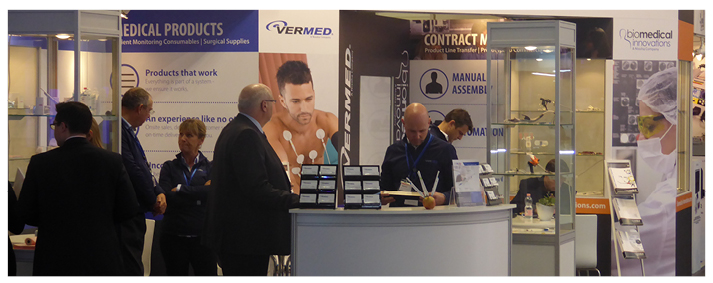
Breakthrough in Light Therapy
LIGHT therapy in the form of organic light emitting diodes (OLEDs) is a potential means of accelerating the healing of wounds, particularly in chronic or infected cases. However, a major challenge in the use of the therapy is the inability to predict potential toxic effects of the materials used on patients. Now, for the first time, scientists at the Fraunhofer FEP in Dresden, Germany, have found a way to analyse the materials that might negatively impact patients, bringing the future of light therapy that much closer.
In an initial pilot study, discussed in a MEDICA messe newsletter, the team used samples of human skin cells (fibroblasts and keratinocytes) to assess the effects of green and cold-white OLED light. To obtain their results, the team studied the vitality and mitochondrial membrane potential of the cells in question. They found that the green light had a positive effect on damaged cell cultures of the epidermal layer. If these results are supported by later trials, this could point towards future applications of therapy applicable for more patients.
Additional studies have also delved further into the potential impact of toxic chemicals in OLED lights. They focussed on the possibility of these substances being released through the electrical operation or mechanical loading caused by bending of the lights, thus changing the shape, number, and metabolism of cells. These studies have, so far, not found any cytotoxicity in the lights that were investigated.
Dr Jessy Schönfelder, Head of Medical Applications Research Group, Fraunhofer FEP, Dresden, Germany, stated: “Even after electrical operation and exposure to mechanical loading by bending, no toxic substances are able to alter cells diffused from the OLEDs.” This breakthrough could mean that therapy using OLEDs can be offered to more patients thus improving quality of life by speeding up treatment times.
Transition Metal Oxide: Infection Control for Medical Devices?
BACTERIA colonising the surface of medical instruments could be killed by a novel, innovative product: a coating with transition metal acids. This invention has the potential to reduce the risk of hospital-acquired infections in patients occurring in the future.
The inventor, Prof Josef Peter Guggenbichler, a retired infectologist from the University of Erlangen-Nürnberg (FAU), Erlangen, Germany, was inspired by the natural protective acid mantle located on human skin, as discussed in a MEDICA press release dated 8th November 2016. Acids that reduce the pH to approximately 4.8 are produced by the sebaceous glands of the skin, forming a protective acid mantle that destroys many potential pathogens. Oxides or transition metals such as molybdenum or tungsten create a similar effect which, Prof Guggenbichler hypothesised, could remove pathogens from endoscopes, urological catheters, or electrocardiogram (ECG) lead sets, in addition to providing protection to room fixtures and furniture by a coloured coating to which only small amounts of the transition metal oxide must be added.
A humidity of 25% is sufficient to provide enough water molecules for the reaction of water from the ambient forming acidic groups with the oxide particles on the surface of the coating, which adjust the pH to 4.5. These acids contain protons that attack the cell wall of many bacteria.
“The protein envelope and fimbria that are used by the bacteria to adhere to surfaces are permanently denatured,” explained Prof Guggenbichler. “Bacteria are not only killed but the coating also prevents a biofilm from forming on the surface.”
Careful Planning Required for Modernisation of Operating Rooms
CAREFUL PLANNING when modernising operating rooms with high-tech equipment is necessary to avoid expensive mistakes, according to a press release from the MEDICA Education Conference 2016. Prof Clemens Bulitta, Director, Institute for Medical Technology, East Bavarian Technical University of Applied Sciences Amberg-Weiden, Amberg, Germany, who presented on this subject on the 17th November, stated: “Many hospitals think only of investment and operating costs but forget the qualification costs for the personnel.”
This recommendation stems from the increased modernisation of operating rooms, to create ‘hybrid ORs’; these enhance the operating environment with imaging techniques including computed tomography (CT) and angiography, and may also provide a robotic assistance system. These are of vital importance in performing minimally invasive procedures, such as heart surgeons repairing valves through a catheter in the inguinal artery. It is believed that >200 German hospitals have a hybrid operating room (OR) and due to financial constraints, in smaller hospitals, there is typically only one unit, meaning there is significant interdisciplinary use for the room. This makes it necessary to expend time and effort to consider the needs of all stakeholders and create a plan to ensure the hybrid OR meets the requirements of all users. Prof Bulitta elucidated: “We recommend a single ‘master plan’ that is orientated based on the hospital’s workflow and considers all groups such as medical technology, technical building equipment, and building.”
Furthermore, the huge investment cost of the hybrid OR can only be justified in a small hospital if it is optimally used. Prof Bulitta commented: “Personnel must know the basics of modern imaging and post-processing, the options for radiation protection, patient positioning, and how to organise ordering and storage of interventional materials.” Prof Bulitta also noted that: “Due to the challenges in interdisciplinary co-operation, specific communication training also makes sense.”
Failure to train personnel can have very negative consequences, with Prof Bulitta warning that: “In the worst case, the hybrid OR is filled with unused high-tech toys.” The patient suffers from being denied access to optimal treatment and the hospital budget suffers as a result of spending a lot of money on equipment personnel are unable to operate.
MEDICA 2016: A World of Innovation
VISITORS to MEDICA 2016 were met with a fascinating array of innovative new technologies according to an official press release from the conference. From wearable technologies and apps for patients’ use to enhanced surgical procedures, we summarise the very best that the exhibition had to offer within its range of specific foci including electromedicine, commodities and consumables, information and communication technology, and laboratory technology/diagnostics. The exhibitions spanned 4 days, offering solutions to healthcare professionals across the board.
Wearable technologies in combination with smartphone apps for patient use are one of the most talked-about medical innovations at present. Cardiovascular disease, diabetes, and remote monitoring of therapies are just some of the areas where this technology has the potential to revolutionise patient care, with early estimates suggesting a very high level of uptake in the near future. Big data is also a key part of innovation research that is currently being developed, allowing researchers to compile findings on a mass scale regarding the effectiveness of therapy for certain diseases. This could pave the way for huge steps forward in our understanding of the causes and the most efficacious therapies for a plethora of health problems.
Innovations from a surgical point of view are also creating some exciting new developments. In great demand are calls for more sensitive imaging including medical imaging flows during surgery, allowing surgeons to view a more accurate picture of the procedure and thus ensuring that interventions are as precise as possible and avoid unnecessary discomfort for patients. Three-dimensional (3D) imaging systems are also eagerly anticipated which assist surgeons by producing a detailed, 3D picture using two image sensors carefully aligned on the tip of an endoscope. This not only makes diagnosis of conditions more accurate but could also reduce the likelihood of surgeons overlooking minute tissue alterations caused by a particular health condition.


